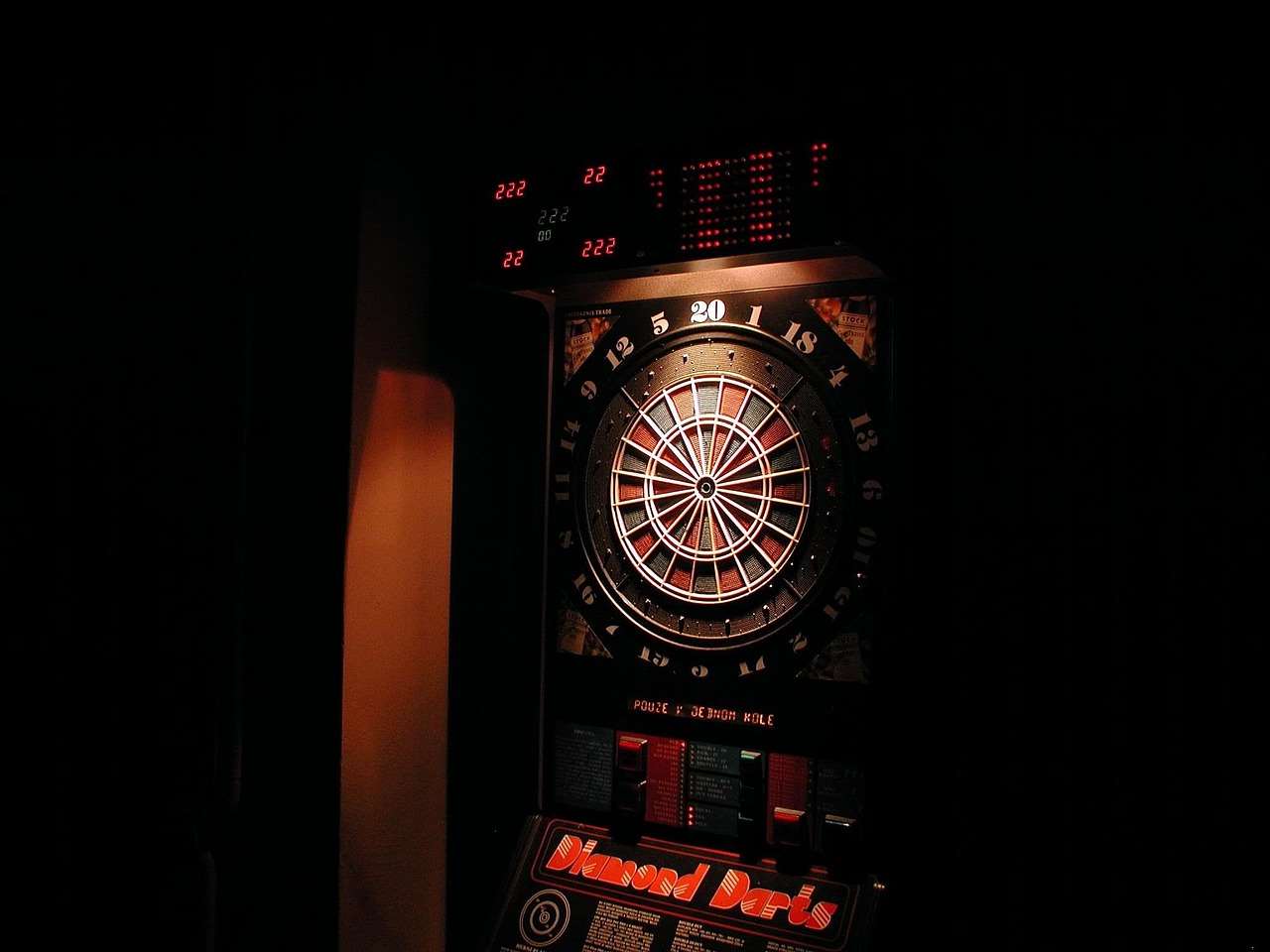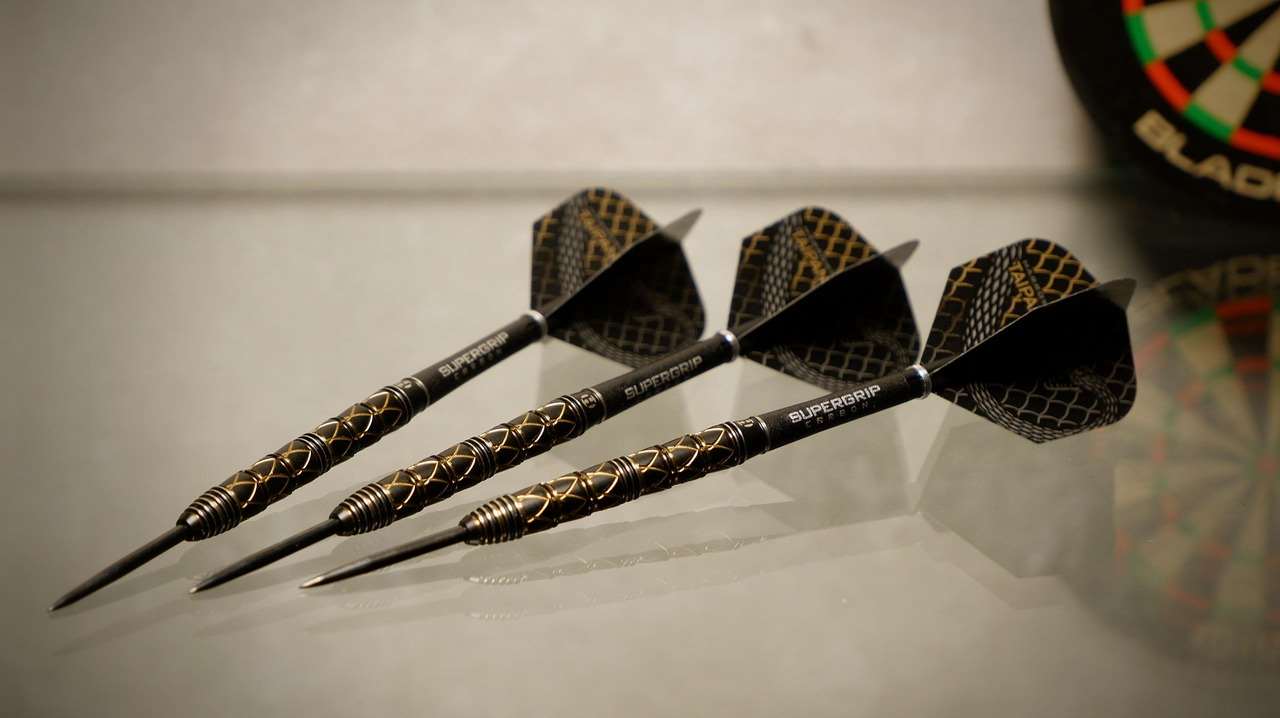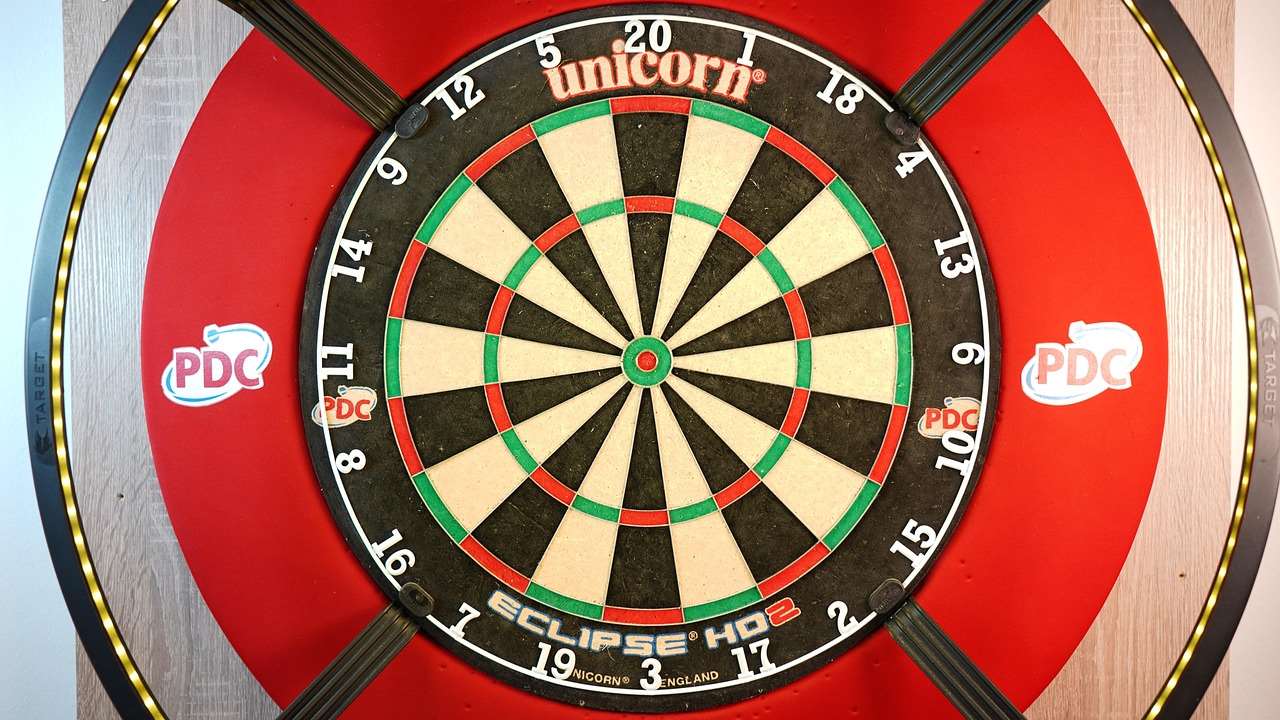Darts Cricket can seem complex, but mastering the scoring system unlocks a highly strategic and enjoyable game; essentially, you’re aiming to “close out” numbers by hitting them three times while preventing your opponent from doing the same. This Darts Cricket scoring system guide will walk you through everything from the basic rules to advanced strategies, ensuring you understand how to play and win. We’ll cover setup, scoring nuances, strategic play, and variations to enhance your Cricket game.
⚠️ Still Using Pen & Paper (or a Chalkboard)?! ⚠️
Step into the future! The Dart Counter App handles all the scoring, suggests checkouts, and tracks your stats automatically. It's easier than you think!
Try the Smart Dart Counter App FREE!Ready for an upgrade? Click above!
Understanding the Basics of Darts Cricket Scoring System
Darts Cricket is a popular darts game played by two or more players. It combines accuracy and strategy, making it a favorite among dart enthusiasts. The core concept involves “closing” numbers before your opponents do, and scoring runs on those numbers while they remain open. Let’s break down the fundamental elements of the Darts Cricket scoring system.
Selecting the Numbers
In standard Cricket, the numbers 15, 16, 17, 18, 19, 20, and the bullseye are used. These numbers become the targets for players to hit throughout the game. Some variations include other numbers or allow players to choose their own set of numbers at the beginning of the match. The choice of numbers adds a layer of strategic depth, as players must decide which numbers to prioritize.
Opening and Closing Numbers
To “open” a number, a player must hit it three times. This can be achieved through any combination of singles, doubles, or triples. For example, hitting a single 15, a double 15, and another single 15 would open the number 15. Once a number is opened, the player can then score runs on that number by continuing to hit it. To “close” a number, a player must hit it three times after it has already been opened, effectively rendering it unavailable for scoring by either themselves or their opponents. Remember, you can’t score on a number that isn’t open, so hitting a number more than three times initially doesn’t give you bonus points.

Scoring Runs
After a player has opened a number, they can score runs by hitting it again. The scoring works as follows:
- Single: 1 point
- Double: 2 points
- Triple: 3 points
These points are accumulated until an opponent also closes the number, or until the player closes the number themselves. Scoring runs efficiently requires a balance between opening new numbers and maximizing points on existing open numbers. This often leads to tactical decisions about which numbers to target based on the current state of the game.
A Detailed Look at Darts Cricket Scoring Mechanics
The beauty of Darts Cricket lies in its scoring mechanics. Understanding these nuances is crucial for developing a winning strategy. Let’s delve deeper into how points are accumulated and how the game progresses.
The Importance of “Marking”
Each time a player hits a number that is in play (either to open it or to score runs), it is often referred to as “marking” that number. The first three marks open the number; subsequent marks score runs. Keeping track of your marks and your opponent’s marks is crucial. Many players use a chalkboard or whiteboard to visually represent the status of each number.
Closing Numbers Strategically
Closing a number before your opponent can open it is a powerful defensive move. It prevents them from scoring on that number and forces them to focus on other targets. However, closing a number too early can limit your own scoring opportunities. The decision of when to close a number depends on the current score, the opponent’s skill level, and the remaining numbers in play. Adjusting dart game rules can impact this strategy.
When to Switch Focus
Knowing when to switch your focus from scoring on an open number to opening a new number is a critical skill in Darts Cricket. If an opponent is close to closing a number you’re scoring on, it might be wise to switch to a new number to ensure you have alternative scoring options. Similarly, if you’re struggling to hit a particular number consistently, it might be better to focus on a different target. This decision making is a vital element of Adapting darts games skills.

Strategic Considerations in Darts Cricket
Beyond just hitting the right numbers, Darts Cricket requires a significant amount of strategic thinking. Here’s a look at some strategic considerations to keep in mind while playing.
Defensive Play
A strong defensive game in Darts Cricket can be just as effective as an aggressive offensive strategy. Preventing your opponent from scoring is paramount. This can involve closing numbers quickly or targeting numbers that your opponent has already started to open. Remember, a closed number is a number that neither player can score on. This becomes even more important when Darts for mixed ability groups are playing.
Offensive Play
Offensive play involves opening numbers and scoring as many runs as possible before your opponent can close them. This requires accurate dart throwing and the ability to consistently hit your targets. It’s also important to be opportunistic, capitalizing on your opponent’s mistakes and taking advantage of any open numbers they leave vulnerable.
Target Prioritization
Deciding which numbers to target first is a key strategic decision. Some players prefer to start with the higher numbers (20 and 19) because they offer the greatest potential for scoring runs. Others prefer to target the lower numbers (15 and 16) because they are often easier to hit. There’s no single right answer; the best approach depends on your skill level and your opponent’s playing style.
Common Darts Cricket Strategies
Several well-known strategies can be employed in Darts Cricket, and choosing the right one for your play style can make a big difference. Here are a few:
- The “Close Early” Strategy: Focuses on quickly closing numbers to deny the opponent scoring opportunities.
- The “Score Heavy” Strategy: Prioritizes opening numbers and racking up points before the opponent can close them.
- The “Balanced Approach”: A mix of offense and defense, adapting to the game’s flow and the opponent’s tactics.

Darts Cricket Variations and Rule Modifications
Darts Cricket is a versatile game with many variations and rule modifications that can be implemented to suit different skill levels and preferences. These variations can make the game more challenging, more strategic, or simply more fun. Darts Variants Fun Games offers players a chance to explore this variety.
Cut-Throat Cricket
In Cut-Throat Cricket, the scoring is reversed. Instead of scoring points for yourself, you score points *for your opponents* on numbers that you have opened and they have not closed. The goal is to have the lowest score at the end of the game. This variation requires a completely different strategic approach, as you’re actively trying to sabotage your opponents while protecting yourself. This is useful to Modify dart games skill gap
Killer Cricket
Killer Cricket is a more individualistic variation where players each choose three numbers at the start of the game. Players then try to “kill” their opponents by closing all three of their numbers. The last player standing wins. This variation introduces an element of elimination and can be very exciting, particularly with larger groups of players.
Choosing Your Own Numbers
Another common variation is allowing players to choose their own set of numbers at the beginning of the game. This adds another layer of strategic depth, as players can choose numbers that they are particularly good at hitting, or numbers that they think their opponents will struggle with. This is especially good for Darts games different skill levels.

Tips and Tricks for Mastering Darts Cricket
Becoming a proficient Darts Cricket player requires practice, patience, and a willingness to learn. Here are some tips and tricks to help you improve your game:
- Practice consistently: The more you practice, the more accurate you’ll become.
- Focus on your grip and stance: Proper technique is essential for consistent dart throwing.
- Develop a pre-throw routine: This will help you stay focused and consistent.
- Analyze your throws: Identify any areas where you can improve your technique.
- Learn from your mistakes: Don’t get discouraged by bad throws; use them as learning opportunities.
- Watch and learn from experienced players: Pay attention to their strategies and techniques.
- Experiment with different dart setups: Find the darts that feel best for you.
These are helpful for Making darts games fair players.
Final Thoughts on the Darts Cricket Scoring System
The Darts Cricket scoring system guide provides a comprehensive overview of the game, from the basic rules to advanced strategies. Whether you’re a beginner or an experienced dart player, understanding these concepts will help you improve your game and enjoy Darts Cricket to the fullest. Remember to practice consistently, develop a strategic mindset, and adapt to the variations and rule modifications that make Darts Cricket such a versatile and engaging game.

Ready to put your knowledge to the test? Gather some friends, set up your dartboard, and start playing Darts Cricket. Experiment with different strategies, try out some variations, and most importantly, have fun! And don’t forget to share this Darts Cricket scoring system guide with your fellow dart enthusiasts!
Hi, I’m Dieter, and I created Dartcounter (Dartcounterapp.com). My motivation wasn’t being a darts expert – quite the opposite! When I first started playing, I loved the game but found keeping accurate scores and tracking stats difficult and distracting.
I figured I couldn’t be the only one struggling with this. So, I decided to build a solution: an easy-to-use application that everyone, no matter their experience level, could use to manage scoring effortlessly.
My goal for Dartcounter was simple: let the app handle the numbers – the scoring, the averages, the stats, even checkout suggestions – so players could focus purely on their throw and enjoying the game. It began as a way to solve my own beginner’s problem, and I’m thrilled it has grown into a helpful tool for the wider darts community.